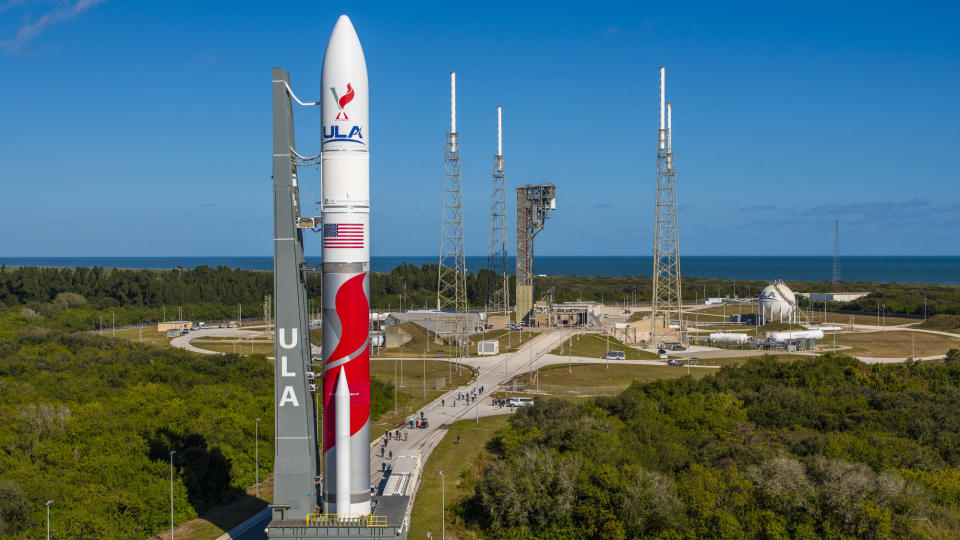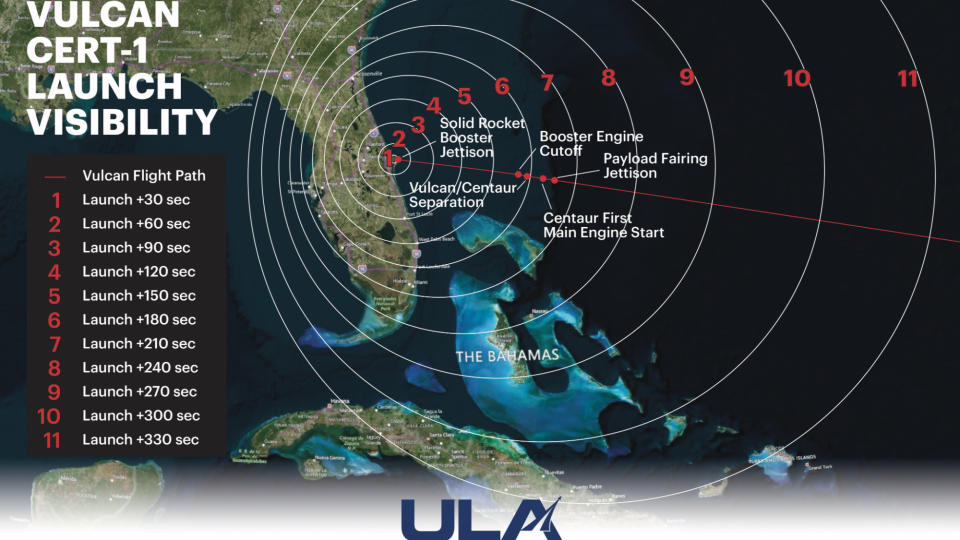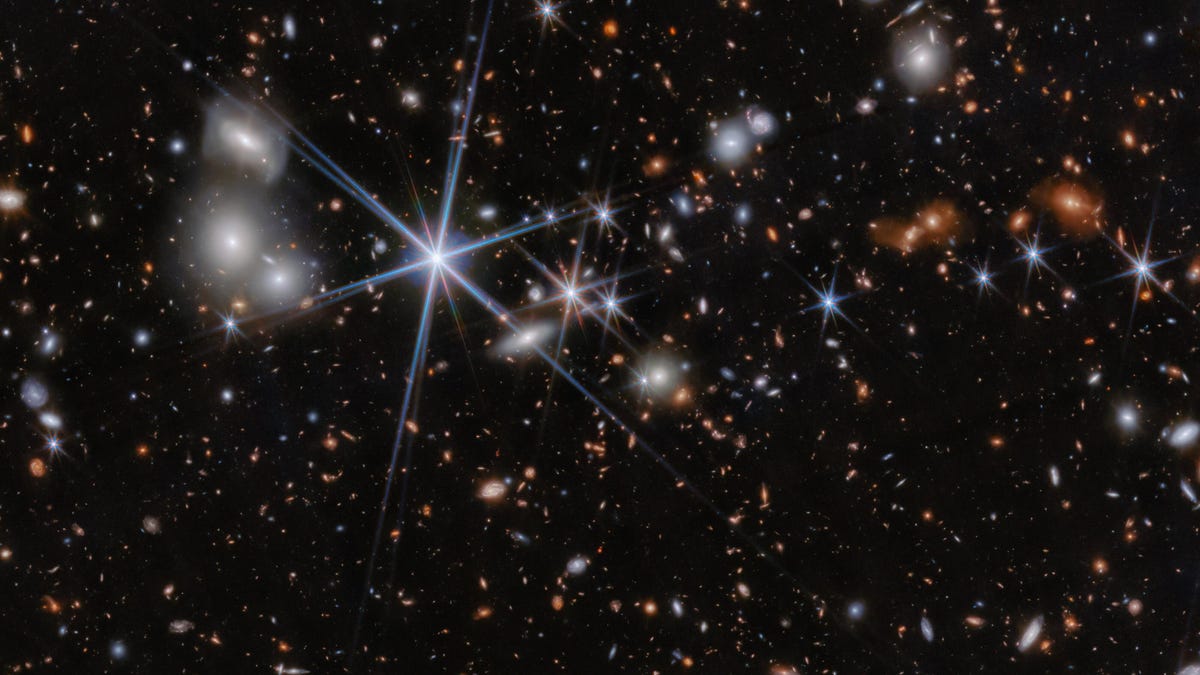After weeks of delays, the United Launch Alliance is ready to launch its first-ever Vulcan rocket — a test flight that will also send a private lunar lander to the moon in another first — but if you’re hoping to watch the historic liftoff, you’ll need to know when and how. For that, space fans, we’ve got you covered.
The Vulcan Centaur rocket will launch from ULA’s Space Launch Complex-41 at Cape Canaveral Space Force Station in Florida at 2:18 a.m. EST (0718 GMT) on its Cert-1 mission to prove its readiness for commercial and government flights. You can watch the Vulcan rocket launch live online, courtesy of NASA and ULA, beginning at 1:30 a.m. EST (0630 GMT).
The rocket is also carrying the Peregrine moon lander, a private mission built by the U.S. company Astrobotic that is carrying six experiments for NASA as the first flight of the agency’s Commercial Lunar Payload Services program. The mission will attempt the first U.S. moon landing since Apollo 17 in 1972, and will be the first private mission ever to land on the moon safely, if successful.
Astrobotic’s Peregrine is also carrying a dozen other payloads to the moon for paying customers, including a package for the delivery service DHL, a digital art gallery, and human DNA samples and cremated remains for space burial companies Celestis and Elysium.
What time is ULA’s first Vulcan Centaur launch?

Currently, ULA is targeting Jan. 8 at 2:18 a.m. EST (0718 GMT) to launch the first Vulcan Centaur test flight, but the launch could happen anytime within a 45-minute window that closes at 3:03 a.m. EST (0803 GMT). The mission was previously scheduled to launch on Dec. 24, but ULA postponed it to January to make room for a full fueling rehearsal.
This is the longest of ULA’s launch windows for its four flight opportunities this week, which includes backup dates on Jan. 9, 10 and 11. The launch windows for those backup dates are 9 minutes, 1 minute and 3 minutes, respectively.
The forecast for a launch on Jan. 8 promises the best weather conditions for the four launch opportunities this week. There is an 85% chance of good weather on the Jan. 8 launch day, but the chance of good weather drops to 40% on Jan. 9 due to thick clouds, and is at 45% for both Jan. 10 and 11, according to Melody Lovin, launch weather officer for the Cape Canaveral Space Force Station’s 45th Weather Squadron.
Can you watch ULA’s 1st Vulcan launch online?
Yes, you can watch ULA’s Vulcan Centaur Cert-1 test flight launch online.
Because NASA has several experiments riding to the moon Vulcan’s payload, the Peregrine moon lander, the U.S. space agency will provide a live webcast of the launch. With liftoff currently set at 2:18 a.m. EST, NASA’s webcast will begin at 1:30 a.m. EST (0630 GMT). You’ll be able to watch the webcast live in the window at the top of this page, or directly from the NASA+ app, NASA YouTube channel and NASA TV broadcast.
ULA will also host its own webcast, which you can also find at ULA’s YouTube channel, as well as ULA’s Vulcan Centaur Cert-1 mission page.
Both webcasts should cover the last hour before launch, and then follow the Vulcan Centaur rocket through launch, stage separation and its first major milestones in orbit. The Peregrine moon lander is scheduled to separate from Vulcan’s Centaur upper stage four hours and 24 minutes after launch, but ULA may end its livestream before that milestone and likely share updates via X, formerly Twitter.
How long is ULA’s 1st Vulcan Centaur rocket mission?


From launch to Peregrine moon lander separation, ULA’s Vulcan Centaur Cert-1 test flight is expected to last about 4 hours and 24 minutes, according to a mission overview. During that period, the Vulcan rocket will launch, shed its first stage and deploy the Peregrine moon lander on a so-called “translunar” trajectory that will take it to the moon. The Centaur upper stage, meanwhile, will continue on its own into deep space to ultimate orbit the sun.
If all goes well, Peregrine will land on the moon on Feb.23 in a region known as Sinus Viscositatis, or the Bay of Stickiness, which is near a set of features called the Gruitheisen domes. Below is a timeline of the Vulcan Centaur Cert-1 test flight.
What if ULA’s Vulcan Centaur rocket can’t launch?
If ULA cannot launch the Vulcan rocket’s Cert-1 mission on Jan. 8, the company can try again for three more days before standing down for several weeks. ULA has a four day window in which to launch the mission, with opportunities on Jan. 8, 9, 10 and 11.
“Those four days are the opportunities,” said Gary Wentz, ULA vice president of government and commercial programs, told reporters on Friday (Jan. 5). “Obviously, as we go through the flow, the number of back-to-back attempts will depend on how far we go into the count, and how much fuel and commodities we consume in the process, assuming it is a weather delay or something like that.” A technical glitch or issue could lead to more lengthy delays.
The chart below shows the launch times and length of the launch window for each day in the window. The launch window length is determined by the orbital mechanics required for Vulcan to launch Astrobotic’s Peregrine lander to the moon.
If ULA is unable to launch the Vulcan Cert-1 mission its four-day window, the company would have to wait until Jan. 23 to try again due to the orbital mechanics needed to deliver the Peregrine lander to the moon, Wentz said.
Editor’s note: Tune in to Space.com on Monday, Jan. 8 to watch ULA’s first-ever Vulcan Centaur rocket launch Astrobotic’s Peregrine moon lander at 2:18 a.m. EDT (0718 GMT). The live webcast is expected to start at 1:30 a.m. EST (0630 GMT).

Dr. Sarah Adams is a scientist and science communicator who makes complex topics accessible to all. Her articles explore breakthroughs in various scientific disciplines, from space exploration to cutting-edge research.







